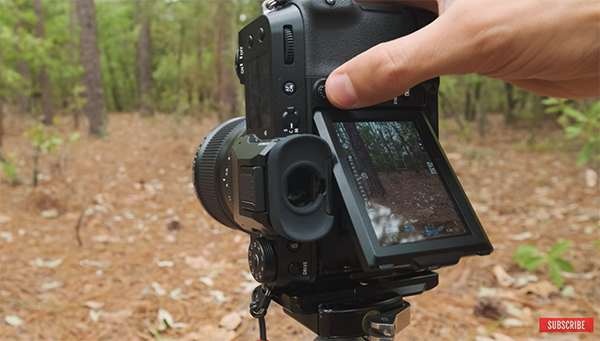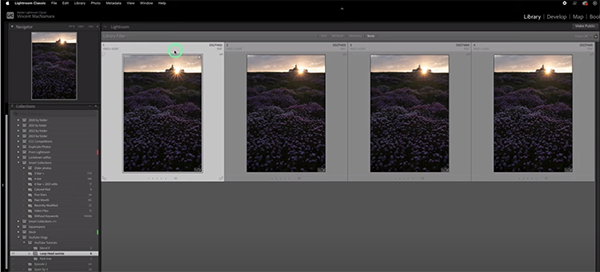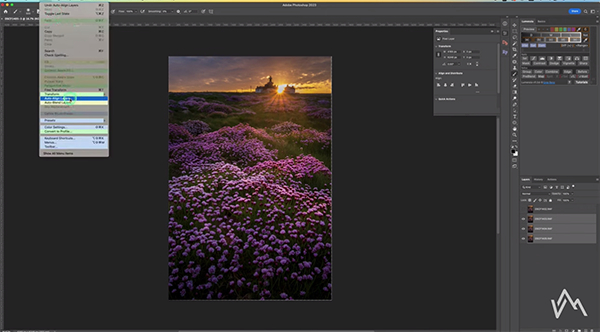I tried 3 genius slow watering hacks in my garden – this one was the best by far
These tried-and-tested slow watering hacks will see you repurpose plastic bottles and flower pots to keep your garden thriving
Some photographers prefer using a camera’s Live View mode to frame images on the rear LCD, instead of doing so through the viewfinder. It’s fine if that’s your reference, unless you experience the problem described in the video below. We’ll give you a hint: It has to do with your vision.
Mark Denney is a very respected landscape photographer and instructor who admits to being a “postprocessing nerd.” Unlike other tutorials that we’ve shared from him in the past, this one isn’t about shooting or image-editing techniques, but rather about whether it’s better to frame images using the viewfinder or with the rear LCD in Live View mode.
This episode was provoked by Denney’s recent trip to the eye doctor, when he learned that his vision has significantly declined. This new shouldn’t have come as a big surprise, because it’s been 15 years since the last time his eyes were checked. After all, our bodies change as we get older, right?

Nonetheless, Denney was a bit shocked. Or as he explains, based upon what he discovered, “I can say my good or perfect vision is something I’ve always taken for granted.” Unfortunately, when things go south, they sometimes do so gradually—and this can make changes in eyesight difficult to discern on your own.
Denney has been a Live View shooter for years, but his decline in nearsightedness has forced him to change the way he shoots. For this discussion he shares his experiences using an electronic viewfinder in comparison to Live View for landscape photography. It’s possible that you have issues with your eyes too, so pay close attention.
The lesson begins with an overview of the pros and cons of using Live View or the viewfinder, setting vision problems aside for a moment. One reason Denney has always preferred Live View is that “you don’t have the camera right up to your face,” therefore giving you “more situational awareness.”

This opinion runs somewhat contrary to conventional wisdom, that says pressing the camera to your face while using the viewfinder provides far greater stability than using the rear LCD while holding the camera further back. In any event, there are several benefits for shooting in Live View, just as there are for relying upon the viewfinder. And Denney does an admirable job of explaining what they are.
But returning to the real point of this episode, how does impaired eyesight factor into the equation? Denney explains all this from personal experience, and by the time you’re done watching you may want to have your eyes checked too.
There’s much more to learn about editing and shooting landscape photos on Denney’s instructional YouTube channel, so be sure to pay a visit when time permits.
And don’t miss the tutorial we posted recently from another pro, explaining the secrets to capturing sharp photographs with any autofocus camera.
Sunrises and sunsets are among the most popular scenes captured by photographers, and they present a few challenges for arriving at correct focus and exposure. One factor is the unusual light that occurs just before the sun peaks over the horizon in the morning, or when it drops out of view at dusk.
There are several techniques for getting the job done in the camera, as we explained in a previous tutorial. But what should you do when the images you shoot don’t make the grade? That’s what the tutorial below is all about.
Vincent MacNamara is a professional landscape photographer based in Ireland, and an equally adept instructor. In today’s episode you’ll see how he uses Lightroom to transform a sunrise photo captured during a trip to the Wild Atlantic Way on Ireland’s stunning West Coast.

This particular technique is extremely effective and combines global and local adjustments in Lightroom, as well as focus stacking in Photoshop. The process involves shooting four images of the same scene. The first is made at f/22 to accentuate a sunburst effect, but diffraction caused by the small aperture presents a few problems that need to be solved.
Sharpness and a lack of detail are two disadvantages of stopping down to minimum aperture—especially on breezy days when camera movement is exacerbated by slow shutter speeds. This is why MacNamara captured three additional exposures at f/13 with a shutter speed of 1/50—each with a different point of focus from foreground and midrange to the background.
MacNamara begins with several simple enhancements before turning to Photoshop to merge the four photos. He chooses the image with focus set on the foreground because the in-your-face flowers are what make the shot. He changes the profile to Adobe Landscape, modifies White Balance and tint, and then makes important adjustments to Exposure, Saturation and Contrast.

With the global adjustment complete, MacNamara applies selective enhancements to various portions of the scene. He walks you through every step of the process, which is surprisingly easy to accomplish. Once everything looks great MacNamara syncs these adjustments to the other three shots. Now it’s time to open them in Photoshop and complete the merge.
With the four images in Photoshop, each on a separate layer, this is what you do: Select all four images from the lower right of the screen, choose the Auto Align Layers option (even if your tripod was spiked to the ground), and follow MacNamara’s straightforward advise.
As an aside, what you learn here will work much the same way when processing sunset images for optimum results. lf you want more tips and tricks like these, pay a visit to MacNamara’s YouTube channel.
And be sure to check out the tutorial mentioned above, with five tricks for capturing beautiful sunrise photos in the camera.
